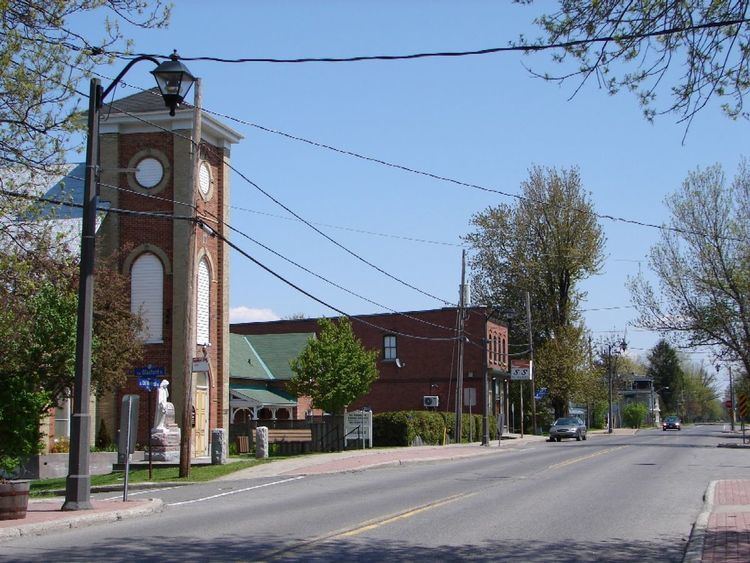Founded 1800 Date dissolved 1999 | ||
 | ||
Weather -7°C, Wind E at 18 km/h, 51% Humidity | ||
Cumberland was a township in eastern Ontario, Canada, that existed from 1800 to 1999, when it was incorporated as the City of Cumberland. It ceased to be a separate municipality in 2001, when it was amalgamated into the city of Ottawa.
Contents
History
Cumberland was originally incorporated as a township in 1800 as part of Russell County. It took its name from the Duke of Cumberland later (King Ernest Augustus I of Hanover). When an upper-tier Regional level of government was created in 1969 to replace neighbouring Carleton County, the township was removed from Russell County and incorporated into the new Regional Municipality of Ottawa-Carleton.
The township comprised the eastern portion of the suburban Orléans area, and the communities of Cumberland (a village with the same name as the township), Notre-Dame-des-Champs, Sarsfield, Vars, Carlsbad Springs and Navan.
Almost 200 years after it was first incorporated, Cumberland became a city in 1999. City status was short-lived, however, as the municipality was amalgamated with Ottawa and all the other constituent municipalities of the Regional Municipality of Ottawa-Carleton to form a new City of Ottawa in 2001.
A memorial stands in front of St. Andrews United Church, dedicated to soldiers who lost their lives during the First and Second World Wars, as well as the Korean War.
Cumberland Heritage Village Museum
The Cumberland Heritage Village Museum, which depicts rural life in a village setting during the 1920s and 1930s, celebrated its 35th anniversary on September 25, 2011. The museum features a General Store, one-room schoolhouse and antique vehicles at the village garage, a tractor-pulled wagon ride, and farm animals. The former Knox Presbyterian/United Church building (1904-1980) and its artefacts were relocated from Vars to the Cumberland Heritage Village Museum. A memorial Roll of Honor and plaque from the Knox Presbyterian Church are dedicated to its members who served and to those who gave their lives in the First World War. A memorial scroll from the Knox Presbyterian Church is dedicated to its members who served in the Second World War.
Every other Sunday, the Ottawa Valley Live Steamers and Model Engineers are on site to give rides on their model trains. The museum has a collection of over 20,000 artifacts, including ceramic, textile and agricultural equipment, many of which have never been on display. The museum and artifact collection were included amongst other architecturally interesting and historically significant buildings in Doors Open Ottawa in 2012.
Current status
Cumberland now forms part of Ottawa. The largest portion of the former municipality now forms Cumberland Ward, and is represented at Ottawa City Council. Most of the suburban neighbourhood of Orléans, which straddled the former boundary between Cumberland and the city of Gloucester, has been split off from Cumberland and Gloucester and is now joined in Orléans and Innes Wards. Thus, Cumberland Ward is now primarily rural in nature, made up of historic villages that now comprise bedroom communities of Ottawa.
